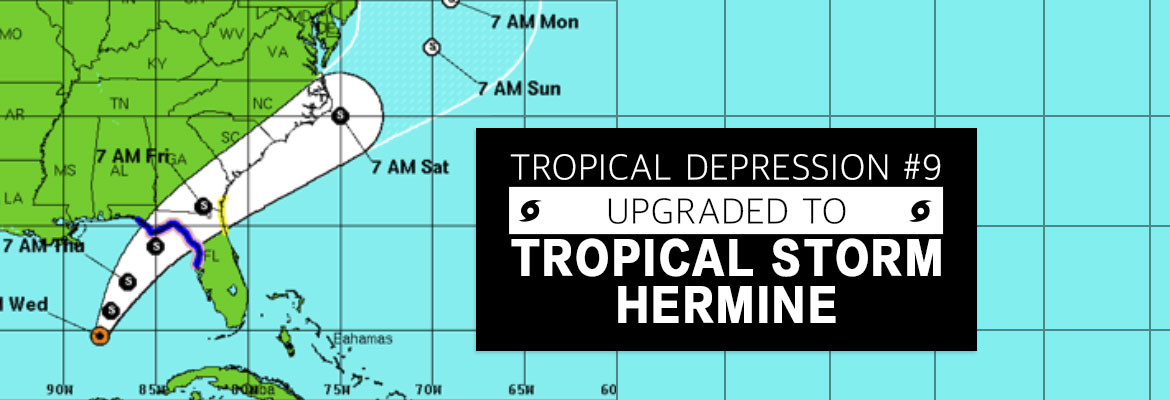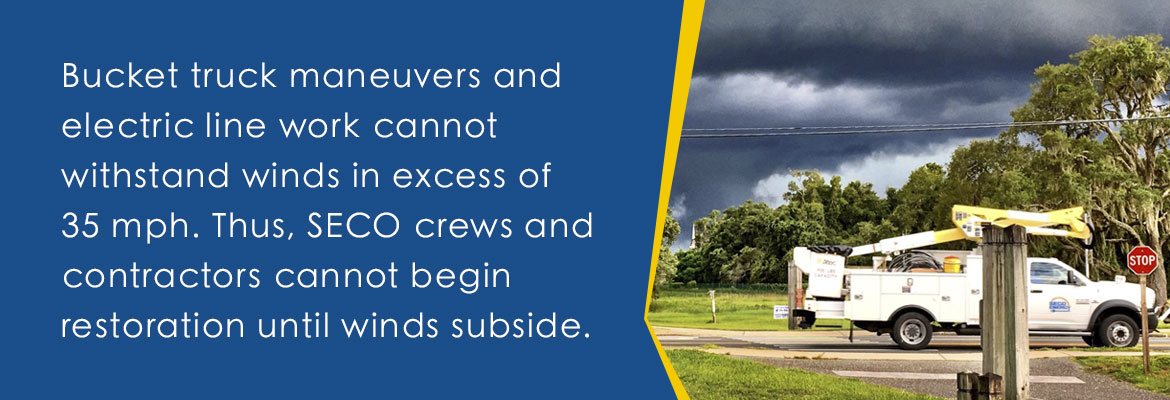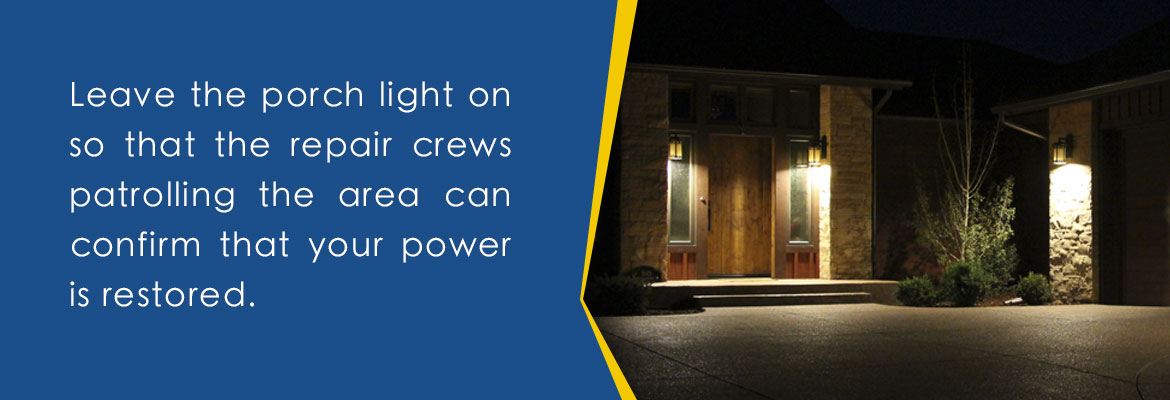SECO News, April 2017
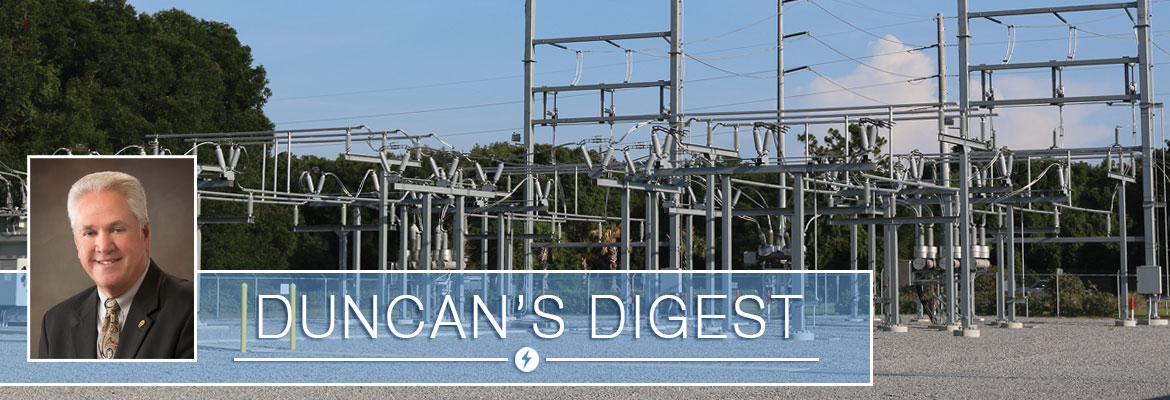
Duncan’s Digest: SUBSTATION BUZZ
When I first started working in the energy industry, I was convinced that the linemen had their own language and it wasn’t English. As a financial guy, industry terms like “feeder,” “backfeed,” and “step-up and step-down,” frankly didn’t make much sense. But, as my career continued and I became engrossed in energy, I now use these terms and more on a regular basis. I thought it might be interesting for you to have more insight into the energy industry at SECO.
Substations are a visible and integral part of our nation’s electric grid. If you think of a generating plant as the brains of the operation, then substations are the heart. Substations serve many functions, transforming high-voltage to low-voltage or vice versa as power flows through them – almost instantaneously.
Substations are an essential component of the grid’s connection as the link between the transmission and distribution portions of an electric system. Substations are key to performing electric system maintenance and balancing the flow of power during irregular operations.
How do the components of the grid work together? As a SECO member, the electricity you use is created at Seminole Electric (a generation and transmission cooperative) power plant and then supplied to a transmission substation near the plant.
The transmission substation increases or “steps-up” the voltage in order for the generated power to travel hundreds of miles via large transmission lines to a SECO substation. Upon arrival, voltage is decreased or stepped-down and sent on its way in multiple directions through SECO’s distribution lines. Along the distribution lines, additional transformers decrease the voltage again before it is ready to energize the homes and businesses SECO serves.
The SECO and Seminole connected electric grid can be thought of as a highway system. Generating plants, transmission lines, substations and distribution lines are all connected – which is a benefit to you. Interconnection allows other substations to pick up load when another substation or distribution line is in high demand. This keeps the energy flowing freely and uniformly on the grid.
Interconnected substations in our service area allow SECO’s Operations crews to restore power quickly and safely to members. When a substation or major line (that we refer to as a feeder) suffers an outage, SECO’s System Control Coordinators can use the interconnected grid to program another substation to pick up the load or “backfeed” service to the meters that lost power. System Control Coordinators also use backfeeding to keep SECO members in service when a substation, transmission or distribution line requires routine maintenance.
At the heart of SECO’s 2,000-square mile territory, are the 48 substations that supply power to almost 200,000 SECO members. SECO owns, inspects and maintains over 12,000 miles of electric lines that represent an almost 800-million-dollar investment.
According to the Thomas Jefferson National Accelerator Facility (Jefferson Lab), electricity moves almost as fast as the speed of light – about 173,000 miles per second. When you turn on a light in your home, the power to run that light was actually created less than one second ago.
Last year, you and your fellow members consumed over 3.239 billion, yes billion, kilowatt hours. Providing safe, reliable electric service to members is one of our top priorities. And our expertly designed, soundly built, well-maintained, sophisticated system allows us to do just that. On behalf of myself and 400+ SECO employees, it is our pleasure serving as your energy provider.
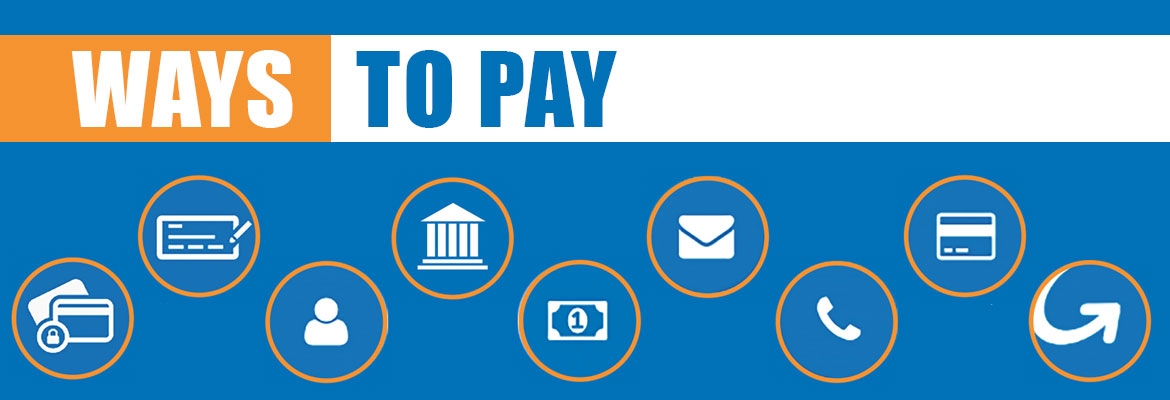
Ways to Pay
SECO offers members several convenient ways to pay your monthly energy bill. Whether you stop by, drive-thru or log in – SECO has a payment option that is right for you.
Pay online with SmartHub – available online or via mobile application, SmartHub is a tech savvy member’s preferred payment choice. Using SmartHub, members can view and pay their bill, enroll in bank draft, update account information and compare energy usage by month or year.
Pay by Bank Draft – Seasonal members appreciate the convenience of having their monthly bill automatically drafted from a bank account of their choice. Thousands of others depend on bank draft to keep their account current with little effort on their part. Sign up through SmartHub today.
Your Bank’s Online Bill Payment – You can also choose to pay your energy bill through your bank’s online bill payment system. When setting up the payment, have your bill available to enter the key information like the account number and SECO’s payment address.
Pay in Person – SECO’s five Member Service Centers have walk-in and drive-thru access available. Some offices have payment kiosks available 24/7 that accept cash, debit and credit cards.
Pay by Phone – Call 1 (855) 938-3432, 24 hours a day, seven days a week to pay by Visa, MasterCard, Discover, debit card or electronic check.
Pay Now – Need to make a quick one-time payment now? PayNow (a quick feature of SmartHub) is available for members to pay online without actually registering for a SmartHub account.
Pay by Mail – Members can mail their monthly payments to:
SECO Energy
PO Box 70997
Charlotte, NC 28272-0997
My Way PrePay – The program is perfect for SECO members on a budget. Members who enroll in My Way PrePay pay for their energy before use. Register with SmartHub and pay online, by phone or through a kiosk. No deposit required.
Fidelity Xpresspay – Pay your SECO bill through a Fidelity Xpresspay location in Central Florida. For a list of payment centers call 1-800-621-8030 or visit www.fidelityexpress.com. Processing time is approximately two days. This payment option is not recommended for MyWay PrePay members or those who have received a disconnect notice. There is a $1.50 processing fee per payment.
MoneyGram – Another option available is MoneyGram. MoneyGram has locations in Central Florida and is recommended for MyWay PrePay members who aren’t using SmartHub. Visit www.moneygram.com to learn more or find a location near you. There is a $1.50 processing fee per payment.
Explore SECO’s ways to pay, find an office location or sign up for SmartHub.
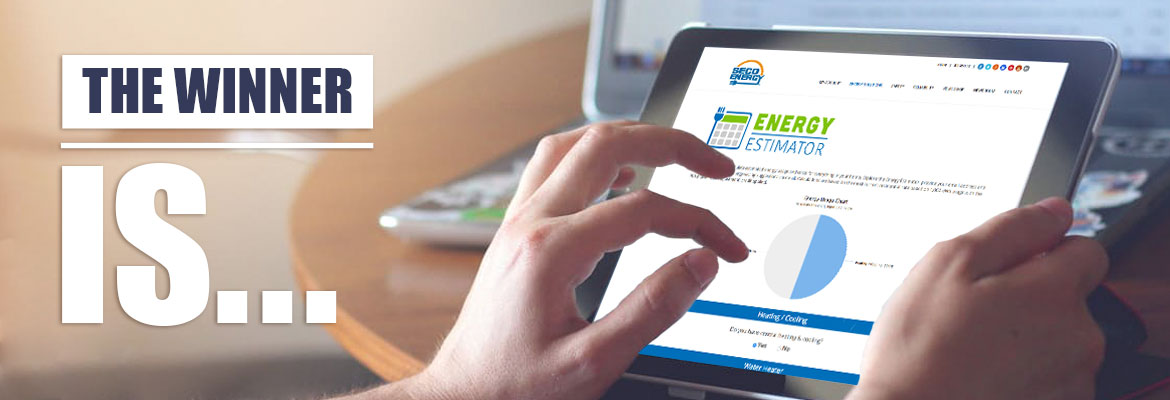
Energy Estimator Winners
Congratulations to our three Energy Estimator Contest winners. John and Barbara Gardner of The Villages are the winners of the $300 bill credit. Bruce McClain of Ocala is the winner of the energy efficiency tools and John Baccoli, also of Ocala, won the programmable Wi-Fi thermostat. Want to learn more about energy efficiency and lowering your bills? Calculate your monthly and yearly energy usage on a variety of appliances and electronics with the Energy Estimator. Interested in an in-depth audit of your home’s energy efficiency? On the website Contact Us page, request a free in-home energy audit with one of SECO’s trained Energy Specialists or if you are short on time, explore the Home Energy Assessment, a comprehensive online energy audit you can complete in the comfort of your home.

Safety Corner
Spring is here, the sun is shining and it’s time to update your landscaping. Before you dig, call 811 – it’s the law. 811 is a free service that locates and marks the underground lines on your property. Don’t be caught unaware, cause an accident or an outage – call 811 before you dig.
Read the full April 2017 SECO News here.




